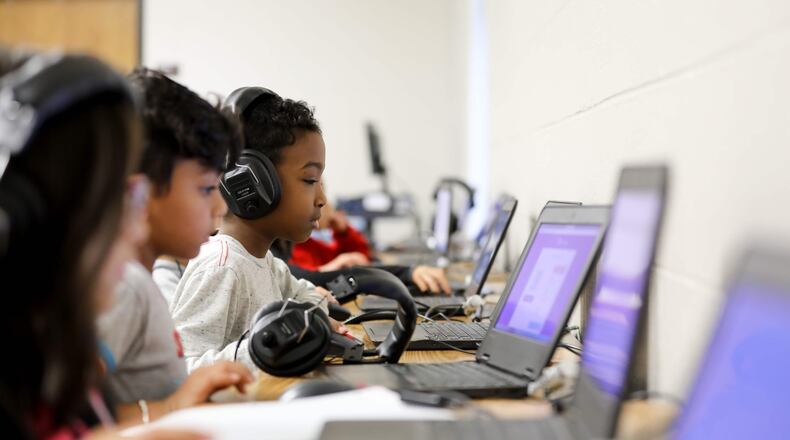Few parents would set their academic goals for their children at basic competencies in two subjects, which is essentially the information gleaned from the annual high-stakes tests required of U.S. students in math and reading.
Testing is seen as a necessary evil in K-12 schools in America, the result of the score-driven accountability baked in both the No Child Left Behind Act under President George W. Bush and Race to the Top Grants under President Barack Obama.
As testing becomes more complicated in the age of COVID-19 and scores less reliable due to the learning disruptions caused by the pandemic, critics of high-stakes exams are calling for a timeout on testing this spring — and perhaps beyond.
“Our national obsession with standardized testing distorts the process of education. That’s because of how narrowly we measure, and it’s also because of the high stakes we attach to those measurements,” said education historian Jack Schneider, a professor at the University of Massachusetts Lowell, on a testing webinar this week sponsored by FairTest, the National Center for Fair & Open Testing, a Massachusetts-based organization critical of overuse of and overreliance on standardized tests.
“Because the things we do measure tend to correlate strongly with demographic variables like family income, race, parental educational attainment, the consequence of this measuring regime tend to land really inequitably,” he said.
The pandemic revealed the many essential community roles schools assume for which they’re neither credited nor measured, including the provision of food, social connections, psychological care, structure, and child care. Speaking to lawmakers Wednesday, Georgia School Superintendent Richard Woods said schools still fed students during closures and remote learning, serving more than 111 million meals throughout the state, to date.
“Now, more clearly than ever, we ought to see how foolish it is to reduce the scope of what we mean by education,” said Schneider, author of “Beyond Test Scores: A Better Way to Measure School Quality.”
COVID-19 has already upended a dreaded high school testing ritual, the ACT and SAT college admission exams. Many private colleges and state systems, including the University System of Georgia, suspended 2021 admissions requirements for an ACT or SAT score as test sites canceled due to the pandemic.
Questions were being raised about the value of admissions tests long before the pandemic, especially after the influential University of California system decided to phase out the SAT/ACT requirement at its nine prestigious campuses, including UCLA and UC Berkeley. The California system pointed to the correlation of the SAT and the ACT to the socioeconomic levels of the test taker and sometimes the ethnicity.
“Testing was created for discriminatory purposes and it still operates in that fashion,” said Julian Vasquez Heilig, dean of the University of Kentucky College of Education. “In the midst of twin pandemics, a health pandemic, but also a social justice and racism pandemic, it is the right thing for us to pause and reassess the regimes of testing nationwide, state to state.”
Those calling for a pause in testing, including Superintendent Woods, typically cite three reasons: the logistics of retrieving computers sent home with students for test taking and summoning all children to buildings to sit for the exams, a requirement of high-stakes testing; the validity of the scores amid the aberrant learning conditions and the stresses created by the pandemic; and whether it makes sense to turn over time and resources to testing that could better help close learning gaps.
Woods won state Board of Education approval to nearly eliminate the weight of state exams on the grades of students in the four high school courses where the tests will be given. “This is something I felt very strong about — that we need to give our teachers a full year of instruction, not focusing on the high-stakes test,” he said.
The social and emotional needs of students and their excitement about returning to school are not enhanced by bringing them back for grueling tests “to sort them and classify them as good learners or not good learners,” said Lorrie A. Shepard, a University Distinguished Professor at the University of Colorado Boulder in the Research and Evaluation Methodology program.
Shepard has heard the argument that test scores can assure equity and direct additional resources to children needing them most. “If the goal is to track where need is greatest, then I have an alternative,” she said. “Let’s use 2019 school scores. If there’s money to invest, I can tell you already from 2019 data who needs it most. And if you are looking for individual students who need it most, let’s count up the kids who actually had no device, who disappeared from schools.”
About the Author
The Latest
Featured



